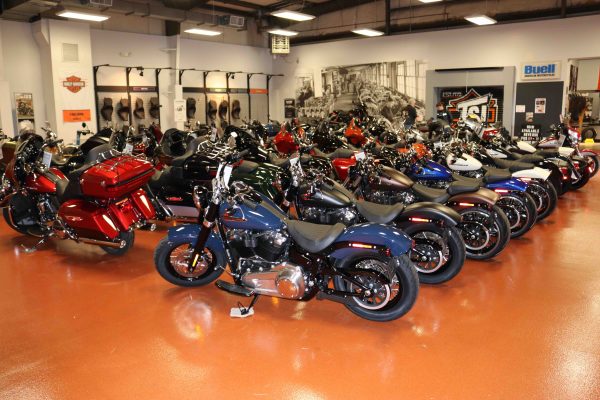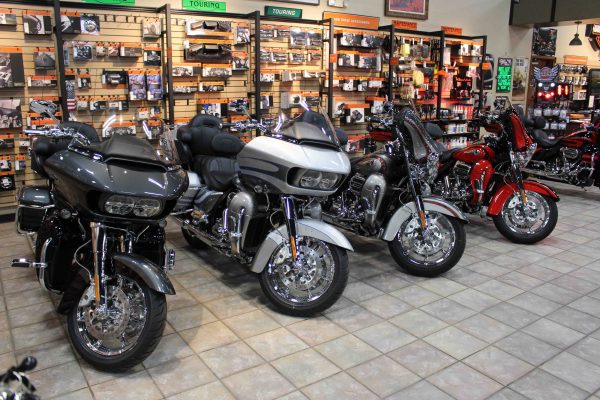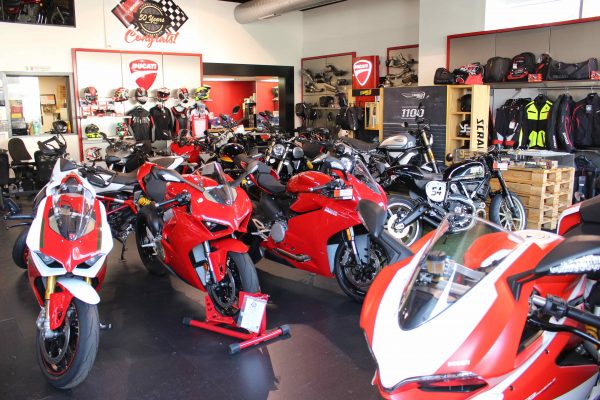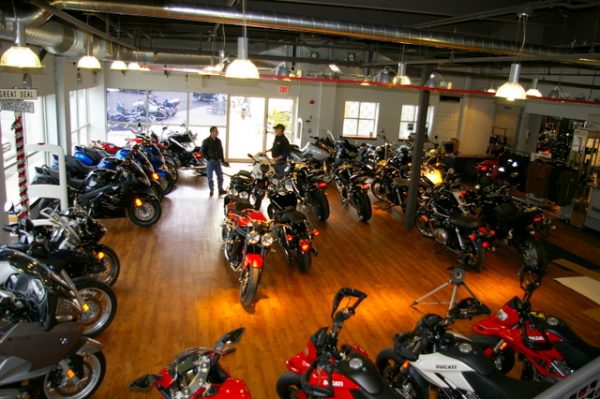LITTLE NECK, NY – Most folks would agree that buying a new vehicle is just not a very pleasurable experience.
We all have stories about our trials and tribulations when attempting to buy a new car or light truck. Mostly, we use them for transportation or work. So, visiting the dealership to join in the buying dance is just not a fun experience.
Motorcycles, on the other hand, represent one of the great pleasures in our lives. The idea of buying a new bike can fill us with excitement and anticipation. There is, however, still the whole physical activity of visiting the dealership, selecting the right bike, negotiating the price, and doing all the paperwork. In this respect buying a new bike doesn’t differ a whole lot from buying a new car.
This new vehicle selling model has been in place for over 120 years. Quite possibly, it’s time for a change.
For the past seven years Carvana has been selling cars and light trucks via a totally virtual process. Vehicle selection is made online, payment is handled the same way, and cars are delivered directly to the purchaser’s driveway.
There’s even a seven-day satisfaction guarantee that gives the buyer the option of returning the car. The catch here, of course, is that Carvana only sells used vehicles.

Extending this selling model to new vehicles opens the door to a serious impediment. It’s called state franchise laws. These laws, which are established on a state-by-state basis, define the manner in which new vehicles can be sold anywhere in the country. And, for the entire span of dealership selling history, manufacturers have supported this selling structure.
The advantage to the dealership is that they basically have a protected “territory” in which they can operate without worrying about a competitor carrying the same brand opening up nearby. Minimum distance between like-brand dealerships is defined in the franchise laws.
The advantage to the manufacturer is having a network of franchised dealers that will set-up their businesses in accordance with manufacturer guidelines. The dealerships bear all of the expense associated with procuring land, putting up and outfitting a building, hiring staff, and maintaining inventory.

I got the chance to experience this from the inside during the year I consulted for a local Mercedes-Benz dealership. We had an enormous patch of land that was fully occupied by the very spacious showroom, which was filled with cars and thirteen sales persons stations.
Outside the building there were new cars waiting to be sold that occupied acres of property. The operation was too large to house the service and prep facility which had to be operated out of another large building separate from our main site.
The cost to keep all of this running was enormous. This set-up is pretty typical for most dealerships, just varying in size in accordance with sales volume. Of course, the dealership endeavors to recover these costs (and some profit) from the selling price of their vehicles (plus service, parts, and accessories sales).
All of this also applies to motorcycle dealerships. One of the bigger exceptions to the car sales model is that is significantly more difficult to get a test ride on a motorcycle. In recent years, we’ve seen some relaxation to the “no test ride” rule. Even my local Harley-Davidson dealer offers test rides. However, you still can’t be guaranteed a test ride when you walk into any motorcycle dealership.
So, considering the high cost and inefficiency of operating new car and motorcycle dealerships utilizing the 120 year-old-model, should we look to a better way?

Even if we, the consumer, would like to try a different way don’t look to any changes any time soon. Until the adoption of an online or semi-online selling model looks good to the dealers and manufacturers, there won’t be any changes.
Even a totally new manufacturer coming into the marketplace can have extreme difficulty beating the existing franchise model. Just ask Tesla. They have fought state franchise laws all over the country.
So far, Tesla has managed to establish sales galleries – many in shopping malls – where they can show a few examples of their vehicles and have highly trained sales persons present their vehicles in the best way. These galleries are not franchises, but rather are factory-owned stores. Factory owned traditional dealerships, however, are expressly forbidden by franchise laws.
Could this approach work for motorcycle dealerships? Would it make sense? While the average motorcycle dealership is nowhere near as expensive to operate as the typical car store, there may be operating cost and customer service advantages for some bike dealers to consider this route. Unfortunately, even the most adventurous motorcycle dealerships are still constrained by franchise laws and their manufacturer relationships.
During the current COVID-19 experience we have seen some creative approaches to minimize customer contact when doing business. Everything from curbside parts sales to home delivery of new and used bikes are generating cash flow for some dealers. Perhaps an expansion of these methods will occur after the pandemic subsides and business returns to normal. This might pave the way for a new approach for motorcycle dealerships. Not abandoning the traditional dealership model, but widening their business activities to include more “low-touch” processes.
 Ride CT & Ride New England Serving New England, NYC and The Hudson Valley!
Ride CT & Ride New England Serving New England, NYC and The Hudson Valley!


